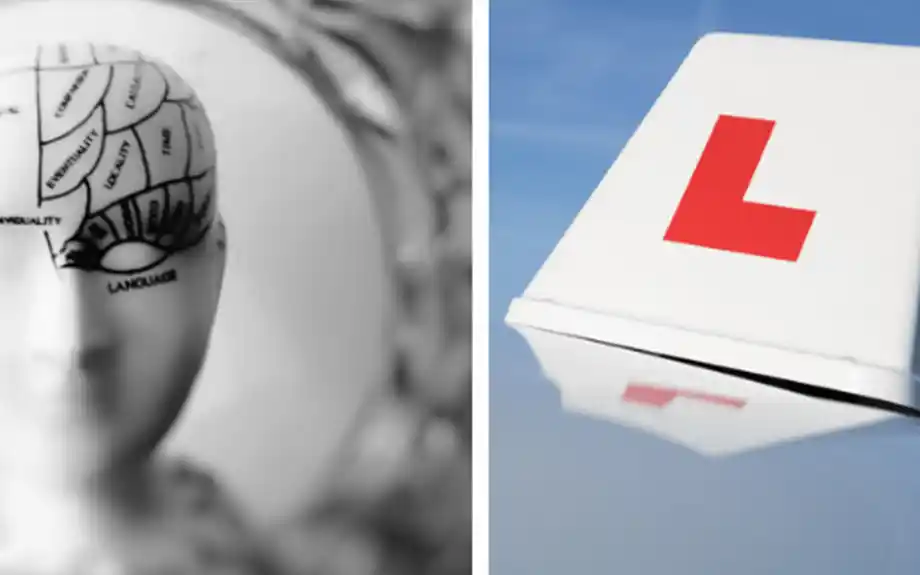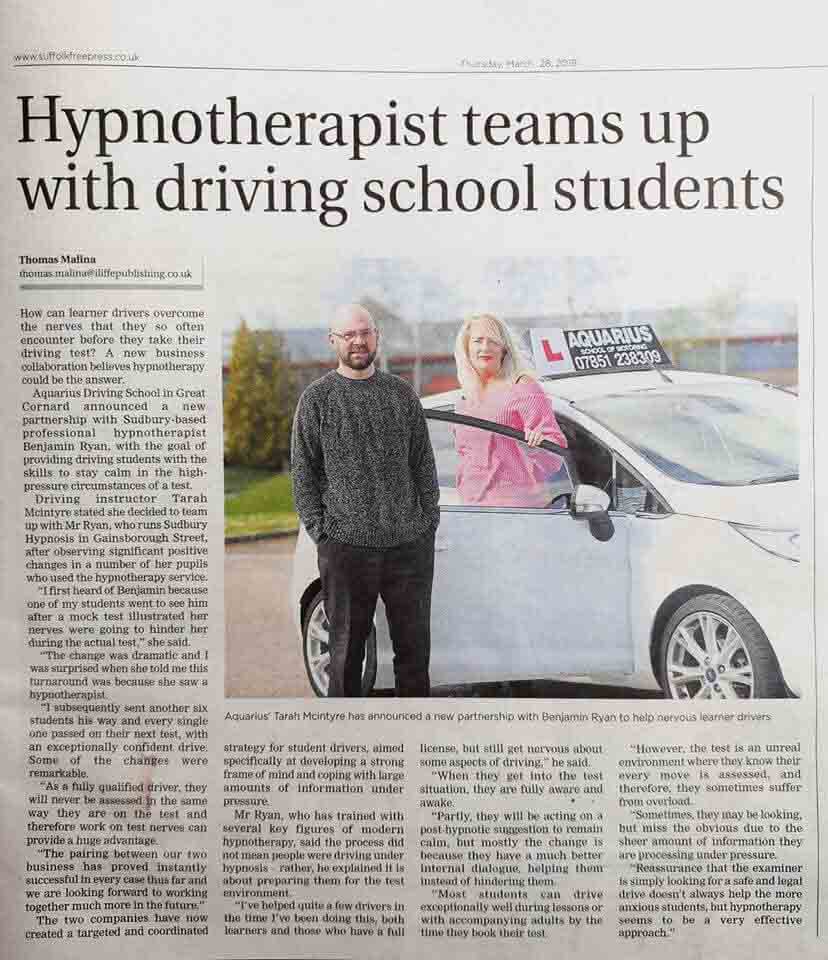Using hypnotherapy to tackle your driving nerves – an interview with Benjamin Ryan
Mar 25 2022 2:19PM
Driving nerves are a very common problem for learner drivers and understandably so! But have you ever considered hypnotherapy to pish through those nerves? The most important thing is to handle the stress appropriately and work through it. Learning to drive should be enjoyable for everyone! We’ve spoken to Benjamin Ryan, who is a hypnotist and hypnotherapist working from Sudbury on the Suffolk/Essex border. He works with all types of clients on all sorts of problems. From smoking to anxiety to phobias and pain management. More recently he has begun working in coordination with local driving schools. Helping their most nervous students pass their driving test.
How did you first start working with learner drivers?
“For as long as I’ve been doing this, I’ve had enquiries from people with anxiety around driving. This is often people who have passed their test but are still anxious about things like motorways, busy traffic, or manoeuvres in front of other people. But just as often the enquiries are from learner drivers who can drive perfectly well but have failed at least one test due to nerves. A few months back I had one of these phone calls. The caller had failed more than one test and was really getting herself into a state about the next one. I asked how she heard about me, to which she said her driving instructor had given her my number. I contacted the driving instructor, who said she had been sending her most nervous students for a while. So far, every single person she had sent had passed their next test. We decided to work together with any future students who were having these issues. Now I’m working with several other driving schools on this basis too.”
What is hypnotherapy and how does it work with treating driving nerves?
Hypnotherapy is using hypnosis as a primary tool to help people make beneficial changes to their behaviours and thinking style. This can be applied to almost any problem where the client feels unable to do something that they should be able to do. Or that they should be able to stop doing but are finding it difficult. The model I like most when I’m working with nervous learner drivers is talking to the client’s subconscious mind. There is a part of their subconscious that has decided that making them nervous is a good strategy to keep them safe. My job is to use hypnosis to persuade that part of them that a better strategy is to keep them calm and alert. So they can deal with any problems rationally and efficiently.  Benjamin works together with driving schools to help students with driving nerves.
Benjamin works together with driving schools to help students with driving nerves.
What do you think are the main concerns for a learner driver who suffers from driving nerves?
“There are generally three things that come up time and time again with this sort of thing. Internal dialogue, performance anxiety/confidence and past bad experiences. All of these are issues you might go and see a hypnotherapist for regardless of the specific problem they are causing you. There are some very effective techniques for dealing with each of them. Often someone will call me in a panic very close to their test and there may only be time to squeeze one session in. In such cases, these will be the three areas we would look to work on. Usually this will be enough to make a significant difference on test day.”
How does hypnotherapy help tackle anxiety that is induced by sitting behind the wheel?
“There are a few different ways in which a hypnotherapist will approach anxiety. The choice of approach will be decided by weighing up the circumstances, the client, and the intended goal. For this sort of work, the circumstances and goal are usually pretty similar, so we will initially be looking at what specifically causes the anxiety, and how does the client ‘do’ that. A largely misunderstood aspect of this type of issue is that anxiety is a thing people are ‘doing’. They may not do it on purpose, and they may not know how they are doing it, but if we can break down how they ‘do anxiety’, we can change their process so they can do things differently.”
What does the typical hypnotherapy session involve?
“There are as many approaches to hypnotherapy as there are hypnotherapists, so there’s no set answer. In my own sessions the first thing will be to try a few very quick hypnotic approaches to changing someone’s automatic responses. These first approaches will involve imagination exercises and making simple suggestions to see how easily the client can let go of the conscious effort and allow the subconscious to dictate the process. Later in the session, I’ll usually be doing things that are more what people might expect from hypnosis; asking them to close their eyes and relax; making positive suggestions; seeing how well they can create a trance state. It’s important to understand that hypnosis is a very interactive process that, at least initially, requires the client to voluntarily follow simple instructions and join in with the process. It’s not mind control and the client maintains free will to follow suggestions or not, so at no point will they be unknowingly doing things they would prefer not to.” The hypnosis aspect can be thought of as grease on the mechanisms for things they may have found harder in everyday life, such as relaxing or letting go of a bad experience from the past. As such it’s very much tailored to the person sat in front of me in any session.  Practising simple breathing techniques can help calm you down when you get behind the wheel.
Practising simple breathing techniques can help calm you down when you get behind the wheel.
Could you share a tip to help keep our cool in the driving seat?
Sure. The best tip I can give is a really simple breathing technique with 4 simple steps.
- 1: Take a deep breath in for a count of 5
- 2: Hold for a second or two
- 3: Let go for a count of 7
- 4: repeat this a few times
The numbers can be changed to suit. The point to understand is that the out breath needs to be longer than the in breath. So the second number needs to be higher. Aside from the calming effect of deep breathing, practicing this before the session has a couple of major benefits. First of all, the client will get used to what the numbers are and how fast to breathe. So they will be able to do this easily without much effort quickly. The second benefit is that they will be setting up a subconscious cue. This technique can make them feel calmer and more in control. Practising this on any driving nerves before the actual test will make it easier to easily apply it on the day.
A huge thank you to Benjamin for his great advice on using hypnotherapy to tackle driving nerves! If you’re located in Suffolk / Essex, and you think Benjamin can help your driving anxiety, you can visit his website to find out more. Or if you’d prefer, give his page a like on Facebook. If you want more details on how Benjamin works with driving nerves, please see the pages below: More about driving test nerves – Sudbury Hypnosis Read about general driving anxiety – Sudbury Hypnosis Here's some driving test nerves tips – Sudbury Hypnosis If you are concerned about anxiety or any other mental health issue, and want to find out more, please click here to visit the Mental Health Foundation. The views and opinions expressed in this publication are those of the authors.

